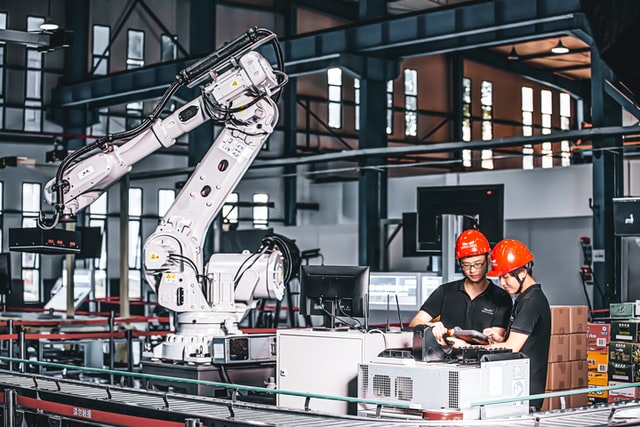Manufacturers can benefit from manufacturing analytics by improving productivity, workforce efficiency, and collaboration. “manufacturing analytics” refers to using data to make more informed decisions about the processes and products in a manufacturing organization. Its benefits include improving quality, productivity, and safety by using cross-database analyses. In addition, manufacturers can use analyzed data to make data-driven decisions in this competitive environment.
Production line data
The vast data stream produced by manufacturing equipment can be analyzed to improve productivity, optimize processes, and reduce costs. Manufacturing analytics is a process that leverages real-time data from sources to derive actionable insights. Visit this website Knime.com to get additional information about manufacturing analytics. As a result, manufacturing professionals can make better decisions, reduce waste, and increase profitability.
First, consider the volume of data generated in the manufacturing process. Typically, a single manufactured product can produce megabytes of sensor data. It also involves a complex process, multiple steps, and various data types. Furthermore, the data may contain social, environmental, and technical information. Moreover, it is necessary to store data for years to ensure liability determinations. Manufacturing data can be difficult to analyze without this analysis. Production line data is a gold mine of potential data.
Resource data
Manufacturers are increasingly battling the challenge of distributed data. This data is often derived from multiple sources and presented in various inconsistent ways. While many organizations capture data, they lack the capabilities to analyze it effectively and use it to improve productivity. In addition, these organizations often struggle to integrate new technologies with legacy systems, and the rapid generation of industrial data requires an overhaul of storage management systems. As a result, manufacturers must find a better way to manage their data.
One way to improve productivity is to use resource data. Data collected from machines in the manufacturing process can help manufacturers determine which parts of their operations are most efficient and which parts are less productive. For example, if the company produces steel in the same factory every day, they might tweak the recipe a bit to improve the yield of their product. This analysis can also reveal the effect of changing parameters, such as the amount of heat the steel receives, on the production cycle. Using YET models can identify areas for improvement and help manufacturers create new standard operating procedures.
Event data
Manufacturers use manufacturing analytics to improve production processes, supply chain management, product design, and customer service. Event data gathered by sensors and devices can provide a complete picture of functions, allowing for more sophisticated and timely analysis. Some of the most common uses of event processing in manufacturing are in operations, research and development, and production lines.
Event data is collected and stored to gain insights into processes, products, etc. It helps manufacturers understand the causes and patterns of problems, which often lead to solutions. Based on historical values and forward-looking data, most manufacturers plan their products with future demand. However, a manufacturing analytics system can help companies predict problems and determine if improvements are needed. Manufacturing analytics is one way to identify these problems and provide solutions. There are many advantages of using event data for manufacturing analytics.
Workflow data
A comprehensive data analytics framework can detect process problems and improve efficiency during manufacturing operations. The real-time information from mobile devices combined with existing data can capture the whole work process that goes into producing a product. Data collection from the various processes and working hours may include machine operation, problem resolution, assembly time, and logistics. Workflow data is essential for improving process quality, production speed, and cost-effectiveness. In addition to the benefits mentioned above, workflow data can also be used for identifying and resolving issues.
In manufacturing analytics, data collected from machine processes are analyzed to gain insight and improve performance. This data includes unstructured and structured information collected by humans, machines, and software throughout the production process. It also provides information on inventory and gross margin return on inventory. The data collected through manufacturing analytics systems can be used to make decisions regarding improving productivity, quality, and supply chain efficiency. Manufacturing analytics systems can also help organizations monitor their overall efficiency.
Quality data
In the age of Industry 4.0, quality monitoring is essential to customer satisfaction. However, companies face numerous challenges regarding quality monitoring, including a wide variety of products, grades, plants, and quality characteristics. This can make a permanent overview difficult, and it can also result in issues that cost a lot of money. But with the right tools and processes, manufacturers can improve quality and increase profits by reducing risks and enhancing production.
To be effective, monitoring systems must provide reliable data to support decision-making. However, the accuracy and completeness of data are often unreliable as it is promulgated downstream. Moreover, inconsistent data can be distorted and misinterpreted. To ensure data quality, monitoring systems must provide metrics to track data quality management.
Predictive analytics
Turning raw materials into finished goods is a complex one, and many unpredictable variables can affect the flow of production. However, predictive manufacturing analytics can help manufacturers anticipate the needs of their factories and keep them running smoothly. This technology applies artificial intelligence and machine learning to identify patterns and predict future events. Using this information, manufacturers can identify and eliminate issues before they arise. This way, they can improve cycle times and increase profits.
These tools allow manufacturers to understand their capacity and the number of units produced each cycle. By visualizing the data, manufacturing users can make informed decisions about the production quantities. The data derived from predictive analytics can also plan a plant’s capacity and determine the optimal number of units to produce in a given period. This data can be combined with demand trends to determine the priority of a production line. Additionally, the analytics can correlate demand fluctuations around special events, which can help manufacturers plan their production accordingly.



